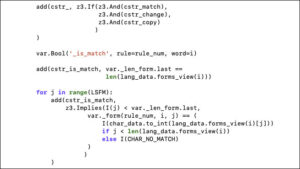Our team started working within Nvidia in early 2009 at the beginning of the ORNL Titan project. Our Nvidia contacts dealt with applications, libraries, programming environment and performance optimization. First impressions were that their technical stance on issues was very reasonable. One obscure example: in a C++ CUDA kernel were you allowed to use “enums,” and the answer would be, of course, yes, we would allow that. This was unlike some other companies that might have odd and cumbersome programming restrictions in their parallel programming models (though by now this has become a harder problem for Nvidia since there are so many software products a user might want to interoperate).
Another example, with a colleague at Nvidia on the C++ standards committee, to whom I mentioned, it might be too early to lock this certain feature design into the standard since hardware designs are still rapidly changing. His response was, Oh, yes, we think exactly the same thing. So in short, their software judgments and decisions generally seem to be well thought out, reasonable and well informed. It sounds simple, but it is amazing how many companies have gotten this wrong.
Nvidia has made good strategic decisions. In the 2013 time frame, Intel was becoming a competitive threat with the Xeon Phi processor. Intel was several times larger than Nvidia with huge market dominance. In response, Nvidia formed a partnership with IBM–itself several times larger than Intel at the time. This came to fruition in the ORNL Summit system in 2018. In the meantime, the Xeon Phi’s OpenMP programming model, though standards-based, turned out to be difficult to write optimized code for, and Nvidia CUDA captured market share dominance of accelerated user software. Intel eventually dropped the Xeon Phi product line.
In the early 2000s, Nvidia went all-in on CUDA. I’ve heard some project teams say they would never use CUDA, because it is nonstandard and too low-level. Many have turned back on this decision. Of course, it is often possible to write an abstraction layer on top of CUDA to make it easier to use and maintain. Also newer programming models like Kokkos can be helpful.
Nvidia also made a prescient decision early to bet big on AI. A little later they decided to go all in on developing a huge number of software libraries is to enable access to many new markets. A huge moat. AMD is trying hard to improve their software processes and catch up.
On the downside, Nvidia high prices are upsetting to many, from gamers to buyers of the world’s largest HPC systems. Competition from AMD and others is a good thing.
And Nvidia marketing speak is sometimes confusing. A comparison was once made claiming that a four GPU system was more powerful than one of the world’s top CPU-only supercomputers on a very specific science problem. I’d like to see the details of that comparison. Also, different figures are being given on how long it took to stand up xAI’s Colossus supercomputer, from 19 days to 122 days. One has to dig a little to find out what these figures mean. Also it was widely reported last year that the GB200 NVL72 GPU was “30 times faster” than H100, but this only refers to certain operations, not key performance measures like flops per watt.
Those are my takes. For more perspectives, see Tae Kim’s excellent book, The Nvidia Way, or this interview.
Thoughts on Nvidia? Please leave in the comments.







